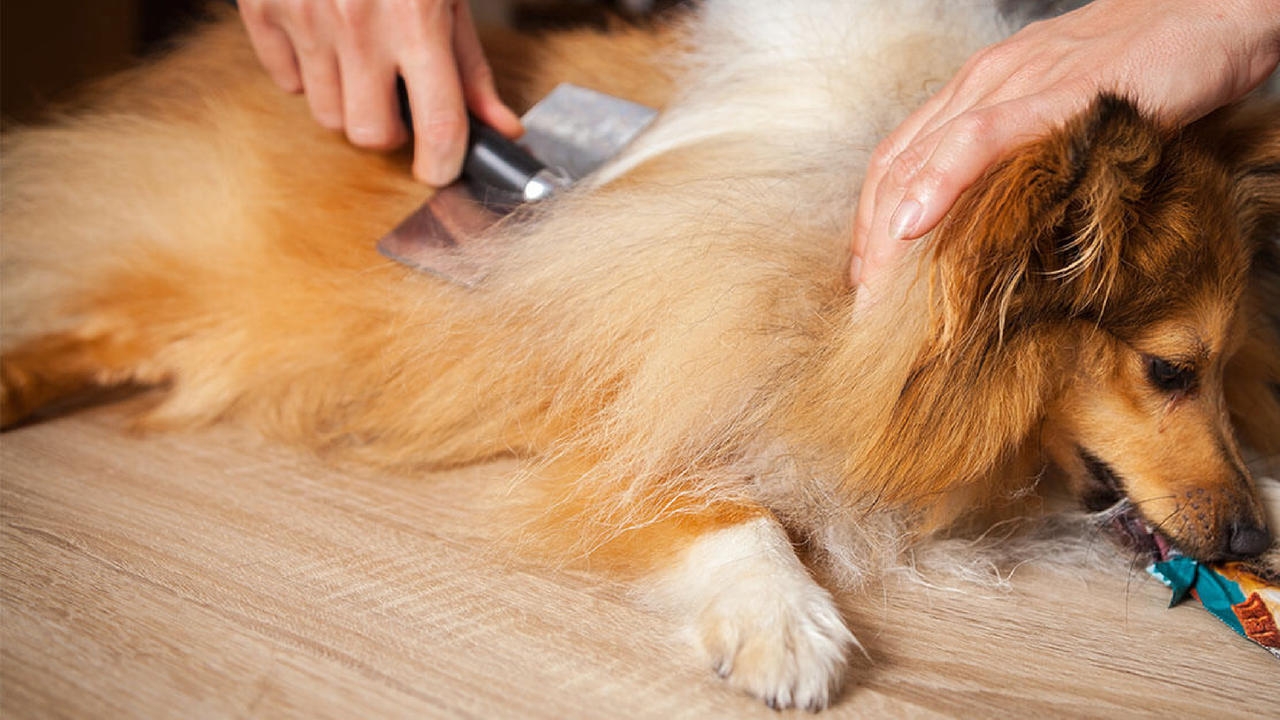Dog Shedding Guide: Causes, Breeds, and Tips to Reduce Shedding
If you’re constantly sweeping up fur or finding hair clinging to your clothes, you’re not alone. Dog shedding is one of the biggest challenges pet parents face. While you can’t stop shedding completely, you can control it with the right care routine and grooming tools.
This guide explains why dogs shed, which breeds shed the most, and the best ways to reduce shedding at home.
Why Do Dogs Shed?
Dog shedding is part of the natural hair growth cycle. Old or damaged hairs fall out to make room for new, healthy growth. Every dog sheds to some degree, though the amount depends on the breed, coat type, and environment.
When Shedding Is a Concern
Shedding is normal, but if you notice sudden hair loss, bald patches, or skin irritation, it may be a sign of an underlying problem. Common causes of abnormal shedding include:
- Allergies (food or environmental) drying out the skin.
- Excessive scratching from skin irritation.
- Thyroid problems (e.g., hypothyroidism) that cause thinning coats.
- Inherited coat conditions such as follicular dysplasia.
- Infections (fungal or bacterial) that affect skin and fur.
- Parasites like fleas, which cause itchy, inflamed skin.
If your dog’s shedding seems unusual, book a vet visit for peace of mind.
Seasonal Shedding: Why Dogs Shed More in Spring and Autumn
Dogs often shed heavier when the weather changes. This is most noticeable in spring, when dogs lose their thick winter undercoats in preparation for summer.
Most dogs have a double coat:
- Topcoat (guard hairs): Repels water and shields from the sun.
- Undercoat: Acts as insulation—keeping dogs warm in winter and cool in summer.
As daylight increases, the undercoat begins to fall out, helping regulate body temperature. This is why your dog may seem extra fluffy one week and “blowing coat” the next.
Dog Breeds That Shed the Most
All dogs shed, but some breeds are known as heavy shedders due to their dense double coats. If you own one of these breeds, be prepared for regular grooming sessions:
- Huskies
- German Shepherds
- Golden Retrievers
- Samoyeds
- Malamutes
- Chow Chows
- Corgis
- Border Collies
- Akitas
What Is a Coat Blow?
Double-coated breeds often go through a coat blow, a phase where clumps of undercoat fall out in large amounts. This usually happens in spring and autumn and can leave piles of fur around the house if not managed with regular brushing.
Can You Stop Dog Shedding?
The reality is you can’t stop shedding completely. Shedding is essential for healthy coat renewal. However, you can significantly reduce loose fur in your home by sticking to a consistent grooming routine.
Myth busted: Shaving your dog won’t prevent shedding. Hair will still fall out, and shaving can damage the coat permanently, leading to uneven regrowth or skin problems.
How to Reduce Dog Shedding at Home
Keeping your dog’s coat healthy requires a mix of grooming and care. Here are the most effective steps:
1. Bathe Your Dog Regularly
- Aim for once a month.
- Avoid over-bathing, which strips away natural oils.
- A good bath loosens dead hair and makes brushing more effective.
2. Brush Frequently
- Brush 1–2 times per week—or daily during peak shedding seasons.
- Regular brushing removes loose hair, prevents mats, and spreads natural oils for a healthy shine.
- For heavy shedders, brushing is essential to stop clumps from tangling and irritating the skin.
Best Brushes and Grooming Tools for Shedding Dogs
Choosing the right grooming tools makes all the difference. Here are the most effective dog shedding tools:
- De-shedding rake: Perfect for thick coats and reaching deep undercoat hair.
- Furminator (use carefully): Great for removing undercoat, but limit strokes to avoid stripping guard hairs.
- Comb: Smooths and detangles after de-shedding.
- Slicker brush: Lifts out undercoat and helps prevent mats.
- Pin bristle brush: Ideal for finishing and smoothing the coat after brushing.
Managing Dog Shedding
Dog shedding may be frustrating, but it’s a natural part of owning a furry friend. With regular brushing, the right tools, and occasional baths, you can keep shedding under control while keeping your dog’s coat shiny and healthy.
If you notice unusual shedding patterns, always check with your vet to rule out health issues.
With patience and consistency, you’ll spend less time cleaning up fur—and more time enjoying cuddles with your pup.
Recent Articles
-
Dog Shedding Guide: Causes, Breeds, and Tips to Reduce Shedding
17th Sep 2025If you’re constantly sweeping up fur or finding hair clinging to your clothes, you’re not alone. Dog
-
Who Let the Dogs Out? 5 Ways to Boost Outdoor Enrichment This Spring
17th Sep 2025The days are warmer, the flowers are blooming, and spring is finally here. For your dog, that means
-
Dog Bathing and Grooming Frequency
16th Jan 2025Keeping your dog clean and well-groomed is an essential part of their overall health and well-being.
- Read more articles




